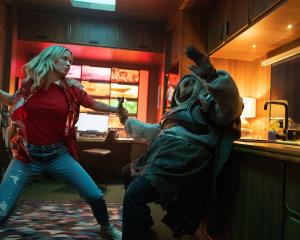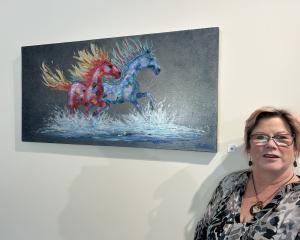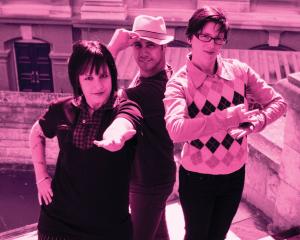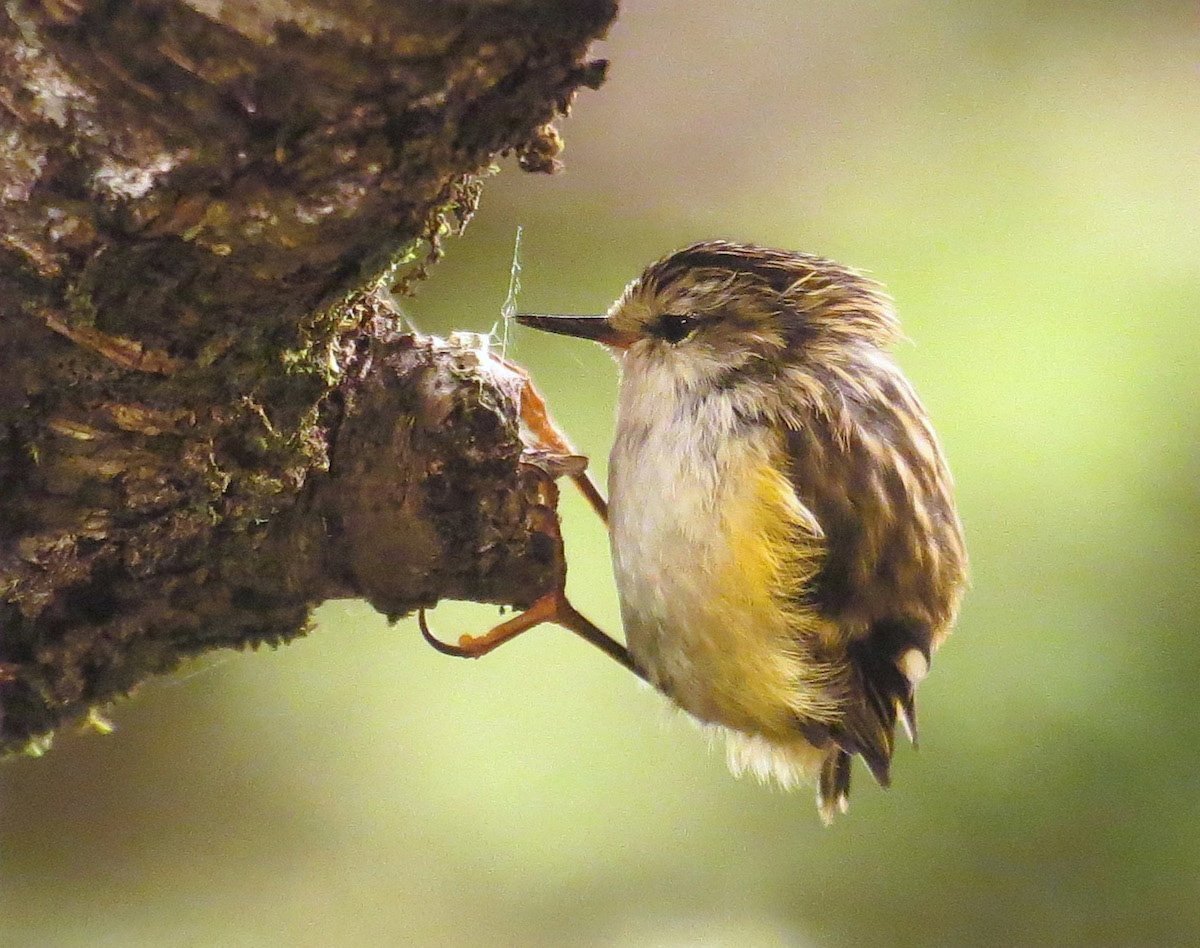
(Tūhura Otago Museum)
Tūhura Otago Museum’s annual photography exhibition has become something of an institution in Dunedin’s art scene. Over the years it has unearthed and showcased some magical photographs by highly talented photographers.
This year, to mark the 25th anniversary of the competition, the museum is putting on a special display of the annual winning entries of every year since the competition’s founding in 2000. Thankfully, the display is in the special exhibitions gallery, where works are presented as substantially sized prints, rather than losing quality by being projected on walls. The display is accompanied by cases displaying local birdlife and — fittingly — a variety of photographic equipment. There are also videos showing local wildlife documentaries, and interactive displays relating to the history of the competition.
The photographs displayed are, without exception, memorable images of the highest calibre, showing the technical skills and precise timing necessary to create the perfect nature photograph. Whether the shot is a narrow focus image of bluebottle fly standing on a green leaf, a playful seal, or a sombre stand of trees, all the images efficiently and artfully capture their subjects.
It would be difficult to pick out the best works of the exhibition, given their consistent quality, and each visitor will likely find numerous pieces to delight them.
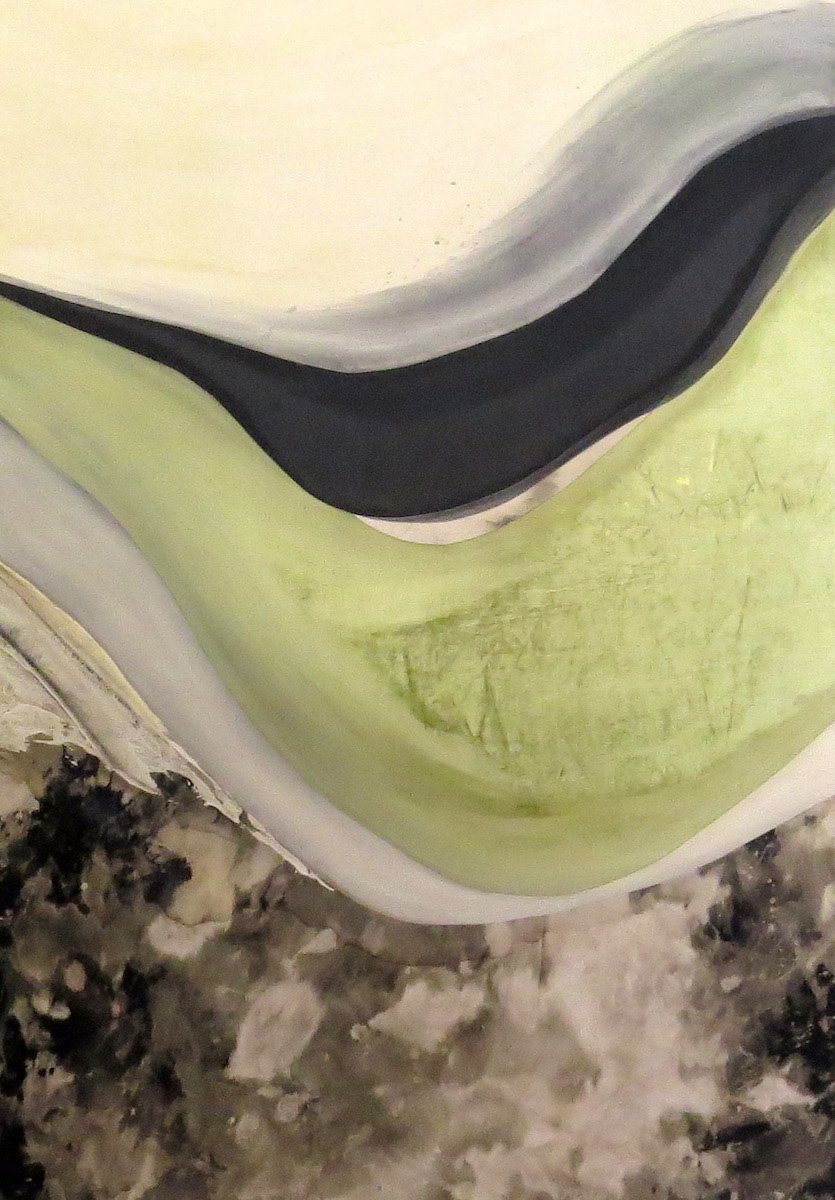
(Olga)
Meg Gallagher is exhibiting six large works at Olga. The pieces, forged from sewn recycled fabrics, create rugged textural landscapes.
Gallagher’s work is an elegy to the losses and harm to the world created by human wastefulness, particularly with respect to the textile waste associated with the fast fashion industry. The artist uses offcuts of denim, velvet, and canvas which she dyes with natural pigments such as onion leaf, marigold, beetroot powder, and tea. The fabrics are sewn together into grounds over which Gallagher paints with broad gestural sweeps of acrylic.
The fabrics are deliberately sewn with texture and grain running in different directions to produce both dynamism and structure, and with shapes that imitate natural landforms. The differentially dyed segments become impressions of green and brown hills floating under dappled skies, soft forms over which the strokes of black or white acrylic add substance, movement, and depth.
Whether the works are successful in their intention of drawing attention to fabric waste is perhaps moot, but without doubt the large works created are powerful, spellbinding art. In their strength and simplicity of form, they intimate as much as depict dream landscapes into which it is possible to let your eyes endlessly wander.
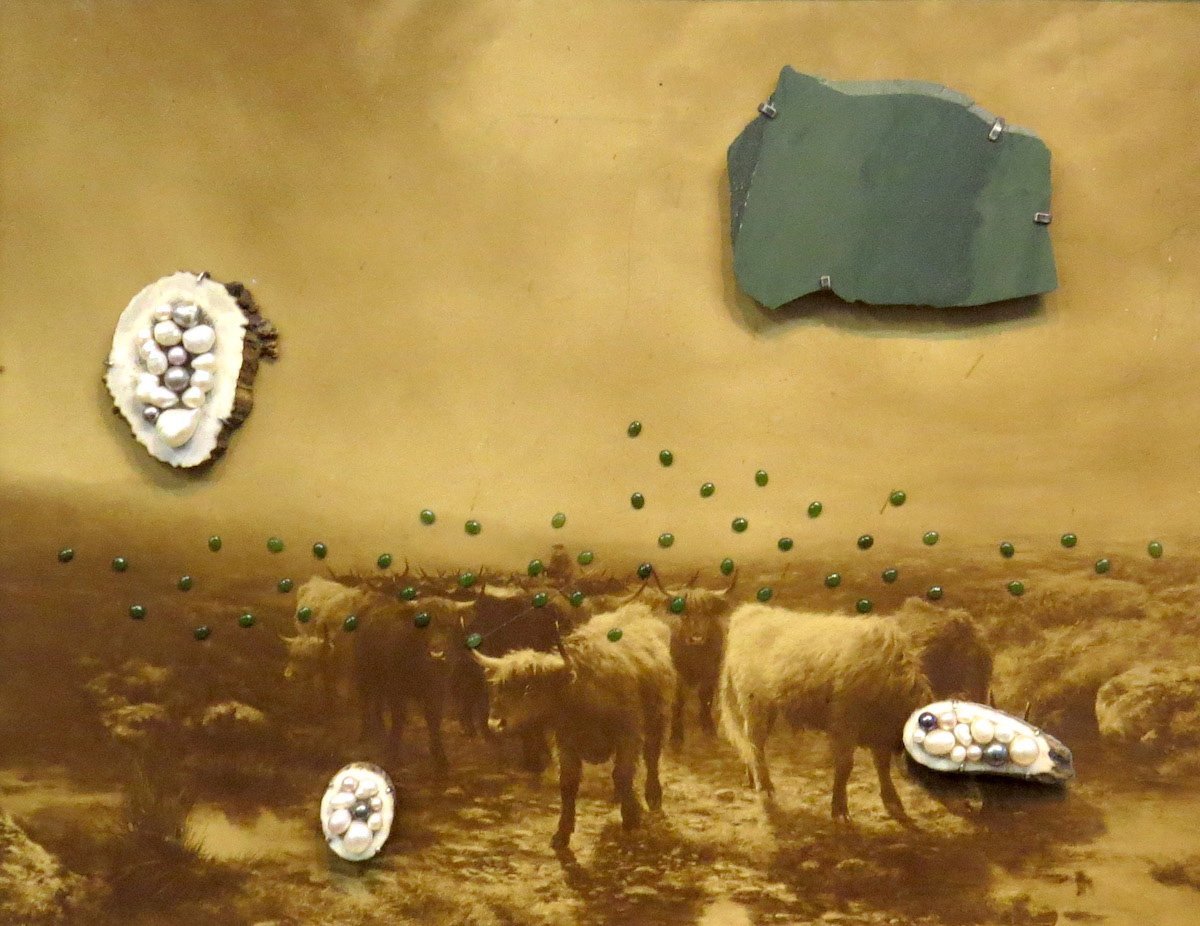
(Moray Gallery)
Where Gallagher used recycled fabric as a ground for her unearthly landscapes, Spiewack repurposes faded prints of classical masterpieces, rescued from second-hand stores, as the ground for her assemblages.
Spiewack is, by metier, a jeweller, and it is her work with gems and raw stone which turns her found canvases from familiar to unfamiliar. The artist, inspired by the altered sense of reality during the Covid lockdowns, has created a new normal, with hand-me-down prints pierced and overlaid with elements of jewellery. The images become new and strange, as if the scenes have been invaded by alien technology.
Accompanying these works are a series of oversized pendants created with slices of stone, polished to reveal delicate grain and pattern within.
The works undermine expectations in several ways. Jewellery is often seen as a poor relation of the high arts, a skill or craft rather than "true" art. Juxtaposing fine jewellery elements with faded replicas of classic art reverses this comparison, as does the deliberate use of discarded, second-hand prints for the composition. This subversion is paralleled by the use of bare polished rock, always a poor relation to gemstones, in the pendants. It is as if the artist is saying "there is beauty and art in even the most neglected of materials".
By James Dignan



